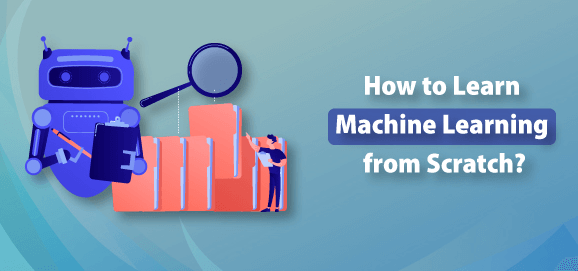How to learn Machine Learning from Scratch
Learning machine learning from scratch can seem like a daunting task, especially if you don't have a background in programming or mathematics. However, with the right resources and motivation, anyone can learn machine learning and become proficient in this field. In this article, we will discuss a few key steps to help you get started on your journey to becoming a machine learning expert.

- Start with the basics: Before diving into machine learning algorithms and techniques, it is important to have a strong foundation in basic concepts such as probability, statistics, and linear algebra. These concepts are the building blocks of machine learning, and understanding them will make learning more advanced topics easier. You can find online resources such as Coursera or edX to learn these concepts, or you can use textbooks such as "Introduction to Probability" by Joseph K. Blitzstein and Jessica Hwang or "Linear Algebra and Its Applications" by Gilbert Strang.
- Choose a programming language: In order to implement machine learning algorithms and build machine learning models, you will need to know how to program. There are many programming languages that are suitable for machine learning, including Python, R, and Julia. If you are new to programming, we recommend starting with Python, as it is a versatile language that is widely used in the machine-learning community. You can find resources such as Javatpoint to learn Python.
- Get familiar with machine learning libraries and frameworks: Once you have learned a programming language, you will want to familiarize yourself with machine learning libraries and frameworks that make it easier to build machine learning models. In Python, popular libraries include scikit-learn, TensorFlow, and PyTorch. These libraries provide pre-built machine-learning algorithms and tools that you can use to build and train models.
- Practice with machine learning datasets: Once you have learned the basics and have a programming language and library of choice under your belt, the next step is to start practicing with machine learning datasets. This includes supervised learning, unsupervised learning, and reinforcement learning, as well as concepts such as bias-variance tradeoff, overfitting, and regularization. There are many resources available online to learn about these concepts, such as online courses, textbooks, or articles. There are many public datasets available online that you can use to practice building and training machine learning models. There are many datasets available online that you can use for this purpose, such as the UCI Machine Learning Repository or Kaggle. Some popular datasets include the MNIST dataset for image classification, the Boston Housing dataset for regression, and the Titanic dataset for classification.
- Take online courses and attend meetups: To further your knowledge and skills in machine learning, it is a good idea to take online courses and attend meetups or conferences. There are many online courses available on platforms such as Coursera, edX, and Udemy that cover a wide range of machine learning topics.
- Additionally, attending meetups or conferences in your area can provide valuable opportunities to learn from experts, network with other professionals, and stay up to date on the latest developments in the field. This can be in the form of online communities, such as forums or social media groups, or in-person meetups or conferences. Not only will this provide you with support and motivation, but it will also give you the opportunity to learn from others and network with professionals in the field.
- Keep learning and practicing: The field of machine learning is constantly evolving, with new algorithms and techniques being developed all the time. It is important to stay up-to-date with these developments and continue learning as you progress in your machine learning journey. This can be through taking online courses, reading articles and research papers, or attending conferences and workshops.
- Learning machine learning is an ongoing process, and it is important to continuously learn and practice in order to become proficient. This may involve taking additional courses, reading research papers, or working on machine learning projects on your own. It is also a good idea to stay up to date on the latest developments and trends in the field by following machine learning blogs and participating in online communities.
In conclusion, learning machine learning from scratch is possible with the right resources and motivation.
By starting with the basics, choosing a programming language, getting familiar with machine learning libraries and frameworks, practicing with datasets, taking online courses and attending meetups, and continuously learning and practicing, you can become proficient in machine learning and pursue a rewarding career in this field.
|

 For Videos Join Our Youtube Channel: Join Now
For Videos Join Our Youtube Channel: Join Now










